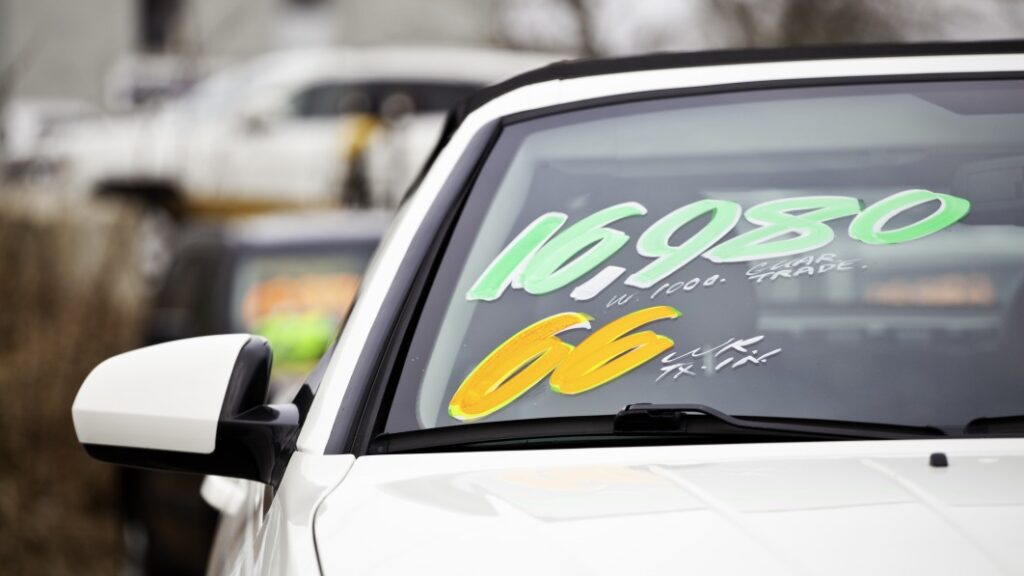Why buying a car is more expensive than ever in the U.S.

The cost of car ownership in the U.S. surged after Covid shut down assembly lines and made vital semiconductors scarce. Then the Federal Reserve rapidly raised interest rates to combat high inflation, making car loans more pricey. As a result, in December, the average sticker price for a new car was $48,759 in the U.S. — or a near-record $770 a month to pay off over time, according to researcher Cox Automotive.
That sticker price was almost 30% higher than in January 2019. Pent-up demand left over from the pandemic is keeping sticker prices high even as factory production has returned to full strength. Used car prices are also elevated as inventory remains low.
1. How have U.S. car prices changed?
For more than a decade before the pandemic, with supply and demand in sync and with interest rates super-low, the average monthly payment bumped along at about $400. By December 2022, almost two years into the Covid pandemic, that number had almost doubled, to a record $788 a month. New car prices have come down from a peak of more than $50,000, but higher interest — the Fed started raising rates in March 2022 —has kept monthly payments high.
Used cars aren’t much better, with an average monthly bill of $561 in November, according to auto researcher Edmunds. That’s up 37%, from $410, in late 2019.
The average overall cost of owning and operating a new car in 2023 — including fuel, maintenance and insurance — was $12,182, or $1,015 monthly, according to AAA. That’s up about 14% from $10,728, or $894, in 2022.
Even with high prices, new-vehicle sales rose 13% in December compared with a year earlier, to 1.4 million vehicles.
2. Why have car prices risen?
Although car prices have declined slightly from their peak, loan interest rates have made up much of the difference. The average rate for a new car is about 9.6%, according to Cox, up from 5.5% in late 2019. The rate for a used vehicle is 14.3%, compared with 8.2% in late 2019. That’s left many Americans struggling to afford their monthly bills.
The proportion of subprime auto borrowers at least 60 days past due on their loans rose to 6.11% in September, the highest in data going back to 1994, according to Fitch Ratings. And many car owners are now underwater on their loans, which occurs when the market value of a car falls faster than the owner can pay down the loan for it. In November, Americans with negative equity were underwater by an average of $6,054, the most since April 2020 and well above pre-pandemic averages.
3. Is the auto supply chain back to normal?
The supply chain holdups and global semiconductor shortage that crippled car manufacturing and pushed up prices have subsided. But car companies have been slow to replenish their inventories, not least because elevated prices help them notch big profits. In December, dealers were holding about 70 days’ worth of inventory, according to Cox.
That’s close to a historical average and enough to spur incentives that equal a 5% discount from sticker prices, about double the year-ago discount, Cox said. But automakers raised prices so much over the past few years that cars are still about $10,000 costlier now, on average, than they were in 2019.
4. What about used cars?
The pandemic scrambled supply and demand in the used car market. The supply of used cars plummeted as fewer people bought new cars and traded in their old ones. At the same time, demand soared from consumers flush with cash from government stimulus checks. It was a perfect storm that allowed some people to even sell their cars for a profit.
Although prices have declined from their peak, there are still headwinds like the disruption of parts production from the United Auto Workers strike last fall. The average used car price at the end of November was $26,091, down $1,065 from a year earlier but still $6,000 more than at the end of 2019.
5. What’s going on with electric vehicles?
Americans are growing wary of electric vehicles because of their high prices. The batteries that power EVs are more expensive than internal combustion engines, so consumers often have to shell out more to get an eco-friendly car. For instance, a Ford F-150 Lightning EV starts at about $50,000, before federal tax credits of $7,500. But a base model gasoline-powered version starts at less than $37,000. Tesla Inc. has tried to cut prices to stoke demand, but those discounts are eating into its bottom line. EV prices have come down but still cost an average of almost $51,000, which is about $3,000 more than internal combustion vehicles.
But the bigger problem is variety. Today, the Nissan Leaf is the only EV that sells for less than $40,000. Many conventional models sell under that price. At least for now, electric vehicles are piling up in lots, with inventories at U.S. dealers reaching a new high of 130 days in December, compared with 69 days for internal combustion vehicles.
6. Any signs that things might improve?
Relief is in sight, according to Cox. New-car inventory is slowly returning to normal levels, which means the market for new and used cars should become less of a seller’s market in 2024, according to Cox senior economist Charlie Chesbrough. But prices need to fall a long way with high interest rates still making payments costly. The Fed expects to lower interest rates in 2024, which would help make owning a car more affordable.



